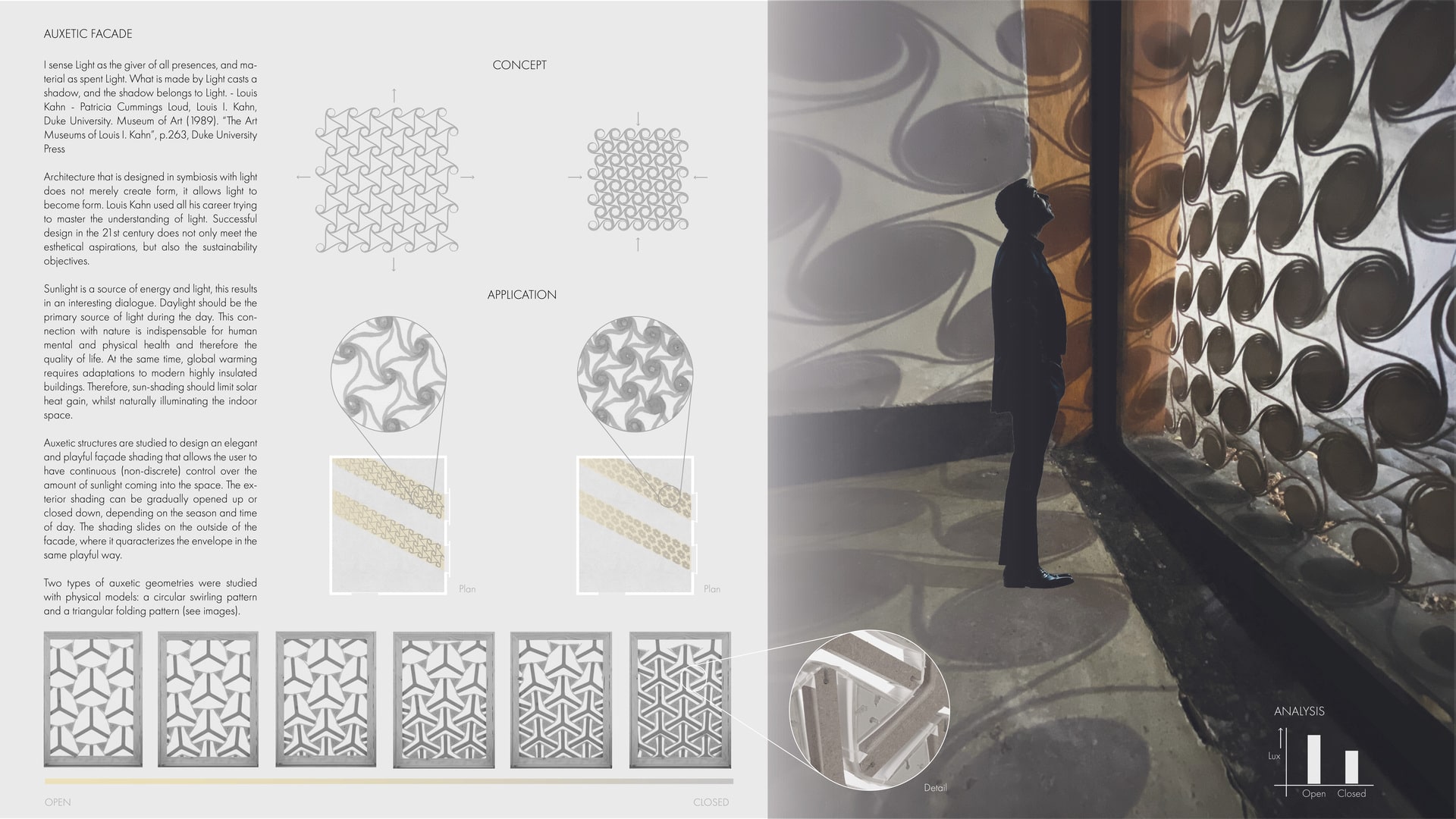Project Description
Auxetic shading I sense Light as the giver of all presences, and material as spent Light. What is made by Light casts a shadow, and the shadow belongs to Light. - Louis Kahn - Patricia Cummings Loud, Louis I. Kahn, Duke University. Museum of Art (1989). “The Art Museums of Louis I. Kahn”, p.263, Duke University Press Architecture that is designed in symbiosis with light does not merely create form, it allows light to become form. Louis Kahn used all his career trying to master the understanding of light. Successful design in the 21st century does not only meet the esthetical aspirations, but also the sustainability objectives. Sunlight is a source of energy and light, this results in an interesting dialogue. Daylight should be the primary source of light during the day. This connection with nature is indispensable for human mental and physical health and therefore the quality of life. At the same time, global warming requires adaptations to modern highly insulated buildings. Therefore, sun-shading should limit solar heat gain, whilst naturally illuminating the indoor space. Auxetic structures are studied to design an elegant and playful façade shading that allows the user to have continuous (non-discrete) control over the amount of sunlight coming into the space. The exterior shading can be gradually opened up or closed down, depending on the season and time of the day. As the shading slides on the outside of the facade, it quaracterizes the envelope in the same playful way. Two types of auxetic geometries were studied with physical models: a circular swirling pattern and a triangular folding pattern. Auxetic structures The main idea of the design is inspired by auxetic structures. An auxetic structure works as follows; once compressed in one direction, it expands in a transverse direction. This behaviour is quantified by the Poisson’s ratio, 𝜈=εaxial/εtransverse. Auxetic structures are characterised by a negative Poisson’s ratio. This means that when such a material is compressed in one direction, it also shrinks in the transverse direction. Negative poisson-ratios are relatively new, whereby the term auxetic was firstly introduced by Ken Evans in 1991. This study further elaborates on the possible application of auxetic behaviour in architectural design. Physical models A spiralling physical model was created first with veneer, and then with cork. The flexibility of the cork material showed a striking auxetic expansion of the two dimensional structure. A second - larger - model was made with triangular shapes. As the shading screen opens up, its elements rotate and displace both vertically and horizontally to allow more daylight to come through. Here, the flexibility comes from hinges connecting rigid elements. Silicone hinges were designed to create enough rotational stiffness to enable a fluid transition between the open and closed states. This hinge element is connected to the rigid shading elements through a puzzle piece connection. Out of plane, the system stays together through friction in these connections. The screen is simply attached to horizontal guide rails that move up and down to enable the system to open and close, and allow the auxetic behaviour to unfold. The pattern organically changes in an elegant and playful manner, as it gives users a sense of control over the amount of daylight coming into the space.
